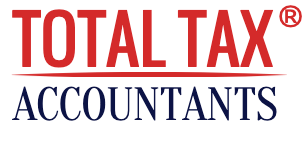If you think about it, research and development Accounting projects play a prominent role in your business’s future success. They are directly responsible for helping you source new products and also making improvements to current products which can help them perform better in the market.

Like all projects, R&D also incurs expenditure that needs to be recorded in your business accounts. However, the way you treat expenditures while recording them in your accounts will differ if the items in question have an alternative future use.
For instance, if you purchase management software for one of your R&D projects, but all the while use it across other kinds of projects as well, then the cost must be recorded in your books in a different way.
There are also differences in how you will record items in your books if you, let’s say, work with another organization where one party is designated to perform all the R&D-related work while the other provides funding.
Or, say, you’re doing research under the government’s RDEC (Research and Development Expenditure Credit) scheme, a number of other accounting considerations could apply to your business.
So, without getting too technical and with the above examples put aside – Research and Development Accounting involves activities that seek to improve not just products but also processes. The core accounting rule to remember is that expenditures are to be charged against expense as ‘incurred’. Some examples include:
- Testing new products and processes
- Research is carried out to acquire new knowledge or breakthroughs
- Applying newly found research findings
- Designing and testing prototypes
- Formulating product and/or process designs
- Coming up with tools that involve a new or experimental technology
- Designing and running a pilot plant
One might wonder at this point: why can’t R&D expenditures be recorded as an asset? Because it’s difficult to do so – the future benefits associated with R&D expenditures are reasonably or sufficiently uncertain. Owing to these uncertainties, GAAP (Generally Accepted Accounting Principles) dictates that all R&D- related expenditures need to be charged to expense as incurred, as we pointed out earlier.
Understanding the different kinds of R&D Accounting

Research and Development Accounting for Company Projects
The general rule of thumb for R&D accounting, in this case, is that the appropriate expenditure is recorded or treated as incurred. Most of these are to be included in your income statement and shown as operating expenses. The exception, of course, are costs associated with software development, because there’s an option to capitalize these as an intangible asset.
Here are the key categories of company R&D expenditure you need to be familiar with, along with how they are to be treated if you have planned alternative future use for them – with all items having an ‘alternative future use’ to be treated as capital expenditure, with their costs depreciating over time.
Assets and materials
Purchase costs are treated as incurred expenses but if the assets and materials have an alternative future use, then the costs should be expensed or treated as capital expenditure.
Indirect costs
An appropriate portion of indirect and energy costs are treated as incurred expenses.
Overheads
The appropriate or relevant portion of overheads are treated as incurred expenses.
Intangible assets
Intangible assets like copyright, licensing or franchising rights that you purchase are treated as incurred expenses. However, they are treated as capital expenditure if they have an alternative future use.
Software and software development
The purchase cost of the software is treated as an incurred expense but if the software is used across multiple projects or has an alternative future use, then it is to be treated as capital expenditure.
As for software development, the development costs are to be treated as intangible assets or incurred expenses, as long as the software is used for the said R&D project only.
Contracted services
Invoiced costs of external services provided for the R&D project are treated as incurred expenses.
Research staff and external research staff
All wages and benefits of staff, including managers, supervisors and support staff working on the R&D project are treated as incurred expenses. If the same staff is involved in other roles as well, then only a part of their costs are treated as incurred expenses, bases on the amount of time they dedicate towards R&D.
For external staff, the costs are treated as incurred expenses if the staff has been hired from an external agency to work on the R&D project.
Research and Development Accounting for the RDEC Scheme
The UK Government’s RDEC scheme applies to startups and small businesses who do not have to pay corporation tax, where credit is provided in the form of reduced tax liabilities or a cash payment. If your company qualifies for this scheme, you can claim certain types of expenses:
- Claim relief on 65% of the fees paid to an external R&D agency.
- Claim 65% of the fees paid to a third party for subcontracting R&D.
- Claim tax relief if you collaborate with a qualifying company – both companies working on the R&D project can claim tax relief; however, only you can claim relief if you collaborate with a university.
- Claim costs under the scheme if research is carried out on behalf of a larger company with you being the contractor.
R&D Accounting for 3rd Party Projects
If you’re pursuing Research and development accounting projects with or for a third party, multiple accounting rules may apply to the transactions taking place between you and that party. These include:
- If you’re lending funds to a third party to carry out research on your behalf and repayment of those funds is governed by the financial benefits or gain from that project, then the funds are to be treated as incurred expenses;
- If you provide the third party with a non-refundable advance to carry out research, the advance is treated as an incurred expense only when the desired results have been delivered;
- If a sponsor lends funds to help you carry out research where you are obliged to repay the funds, then the funds along with the relevant Research and development accounting costs are treated as incurred expenses, irrespective of the results achieved;
- In a merger or acquisition, if the other party acknowledges your R&D project as goodwill, then your R&D expenses will be treated as capital.
Next steps
This article serves merely as a brief outline to what research and development accounting is. To discuss the specific accounting needs of your R&D project, speak to an experienced business accountant today.


